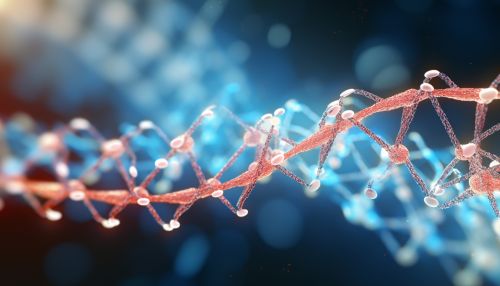RNA Binding Protein
Overview
RNA-binding proteins (RBPs) are a class of proteins that interact with Ribonucleic acid to regulate various biological functions. RBPs are involved in many cellular processes, including transcription, splicing, translation, and RNA transport. They play a critical role in gene expression and are essential for the maintenance of cellular homeostasis.


Structure
RBPs typically contain one or more RNA-binding domains (RBDs), which facilitate the interaction with RNA. These domains include the RNA recognition motif (RRM), the K-homology (KH) domain, the double-stranded RNA-binding domain (dsRBD), and the zinc finger domain, among others. Each of these domains has a unique structure that allows it to bind to RNA in a specific manner.
Function
The primary function of RBPs is to bind to RNA molecules and regulate their function. This can involve altering the RNA's structure, stability, location, or function. For example, RBPs can influence the splicing of pre-mRNA molecules, the stability of messenger RNA (mRNA), and the translation of mRNA into proteins.
Role in Disease
Abnormalities in the function of RBPs can lead to various diseases, including cancer, neurodegenerative diseases, and autoimmune diseases. For example, mutations in the gene encoding the RBP FUS are associated with amyotrophic lateral sclerosis (ALS) and frontotemporal dementia.
Research and Future Directions
Research into RBPs is a rapidly growing field, with potential applications in disease diagnosis, prognosis, and treatment. Understanding the precise mechanisms by which RBPs regulate RNA function could lead to the development of novel therapeutic strategies for a range of diseases.
